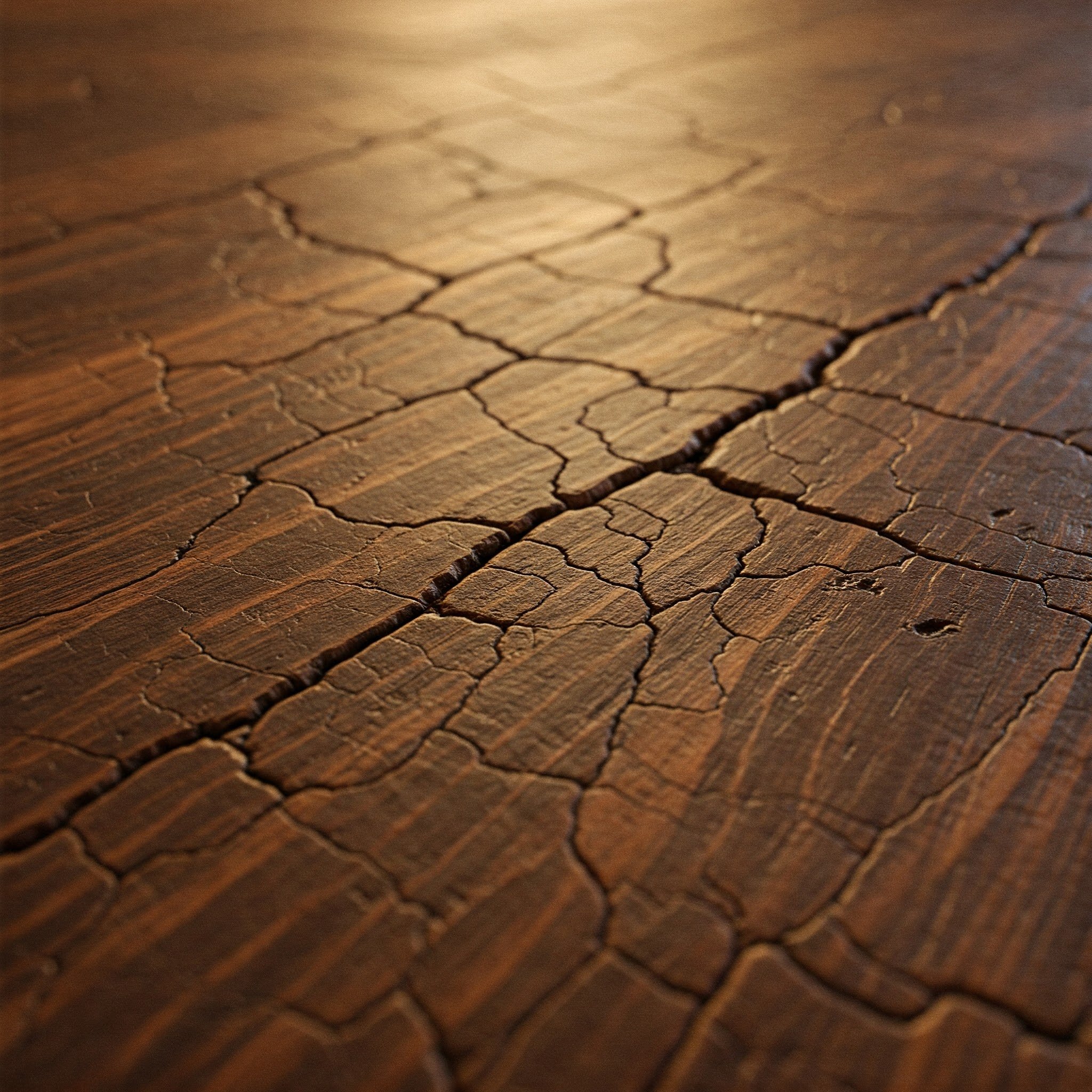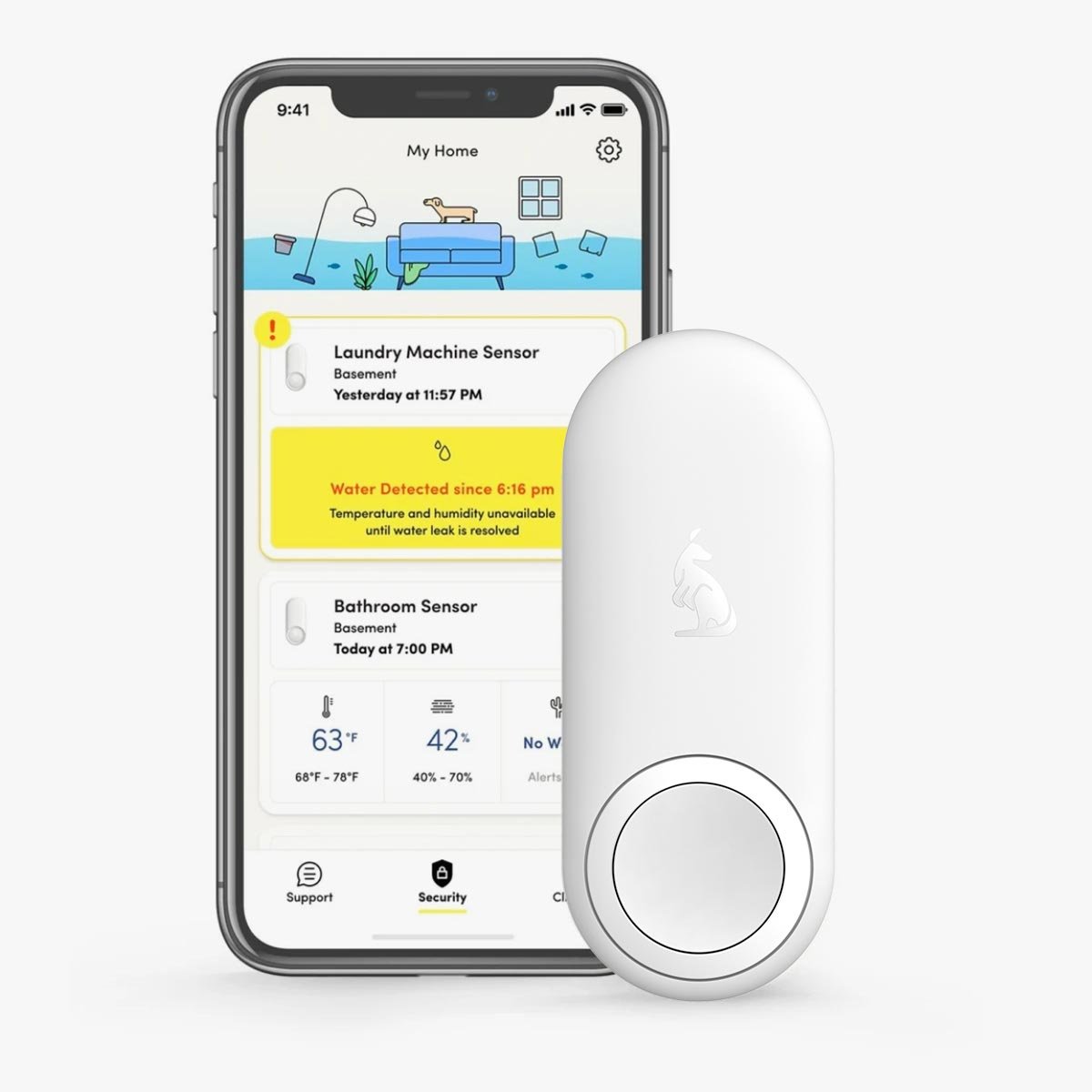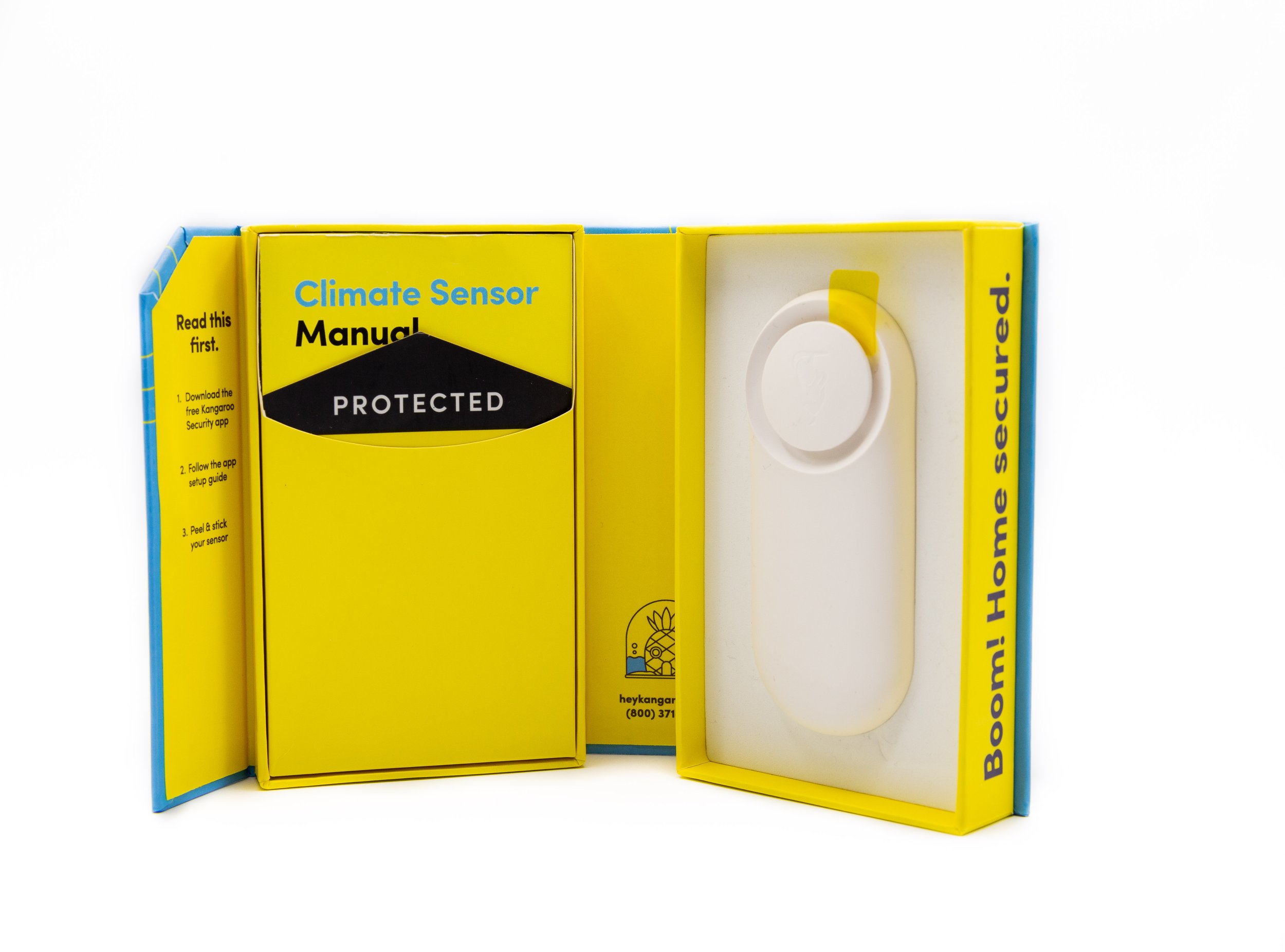Why Humidity at Home Should Matter to You
When you think of humidity, you might picture sticky summer afternoons. But home humidity does more than affect comfort — it directly impacts your health, your home’s condition, and even your energy costs.
Experts recommend keeping indoor humidity between 30% and 50%, with an ideal level around 45%. Levels too high or too low can cause serious problems — from mold growth to respiratory issues to expensive home repairs.
The first step toward better air quality and a healthier home is simple: track your humidity levels.
How to Measure and Monitor Humidity Indoors
Humidity isn’t visible, but it’s easy to monitor with the right tools.
The Kangaroo Water + Climate Sensor offers an affordable, simple way to:
Track humidity and temperature 24/7 from your smartphone
Set custom comfort ranges for alerts
Catch changes early before damage occurs
Don’t have a sensor yet? Watch for natural warning signs:
Signs of high humidity include:
Condensation on windows
Musty odors
Peeling wallpaper or paint
Visible mold growth
Signs of low humidity include:
Dry skin or nosebleeds
Increased static electricity
Cracking in wood furniture or floors
Malfunctioning electronics
The Impact of Humidity on Health and Home
1. Health Risks of Poor Humidity Control
Low humidity can lead to dry skin, respiratory irritation, nosebleeds, and worsen conditions like asthma and bronchitis.
High humidity creates a breeding ground for mold, dust mites, and bacteria — triggering allergies and serious respiratory illnesses.
According to the CDC, mold exposure can be dangerous for people with weakened immune systems or chronic lung conditions.
2. How Humidity Affects Your Home’s Structure
Humidity doesn’t just impact your health — it can damage your home, too:
Dry air causes wood to crack and furniture to warp.
Excess moisture leads to moldy walls, rotting floors, and peeling surfaces.
Professional mold removal alone can cost between $1,122 and $3,330 — far more than the cost of proactive monitoring.
How to Improve and Balance Humidity at Home
Achieving healthy humidity levels is easier than you think. Here’s how:
Use the Kangaroo Water + Climate Sensor to monitor conditions in real time.
Add a humidifier if the air is too dry (especially during winter months).
Install a dehumidifier for overly damp environments (particularly in basements or bathrooms).
Ventilate your home properly — use exhaust fans, open windows, and maintain airflow.
Seal leaks and insulate your home to prevent outside moisture from creeping in.
Maintaining humidity between 30–50% will help protect your health, your belongings, and your home’s structure.
Why Choose the Kangaroo Water + Climate Sensor?
The Kangaroo Water + Climate Sensor offers a smarter, simpler way to:
Monitor humidity and temperature levels remotely
Get real-time notifications when conditions change
Prevent costly repairs from mold, water damage, or dry air
Easily integrate with other Kangaroo smart home devices
With Kangaroo, you can feel confident that your home is safe, healthy, and comfortable — all year round.
Frequently Asked Questions (FAQ)
What is a good humidity level for a house?
A healthy indoor humidity range is between 30% and 50%, with an ideal target around 45% for maximum comfort and air quality.
How can I tell if the humidity in my home is too high or too low?
Signs of high humidity include condensation on windows, mold growth, and musty smells. Signs of low humidity include dry skin, static electricity, and cracked wood furniture.
Can high humidity make you sick?
Yes. High humidity promotes mold, dust mites, and bacteria growth, all of which can trigger allergies, asthma, and other respiratory problems.
What happens if indoor humidity is too low?
Low humidity can cause dry sinuses, irritated skin, nosebleeds, and increased risk of respiratory infections.
How can I monitor humidity levels in my home?
The easiest way is with a smart humidity sensor like the Kangaroo Water + Climate Sensor, which sends real-time readings directly to your smartphone.
Take Control of Your Home’s Humidity Today
Don’t leave your health and home at risk. Start monitoring your indoor air quality today with the Kangaroo Water + Climate Sensor — and enjoy a safer, healthier, more comfortable living environment year-round.
Get your Kangaroo Water + Climate Sensor now!







